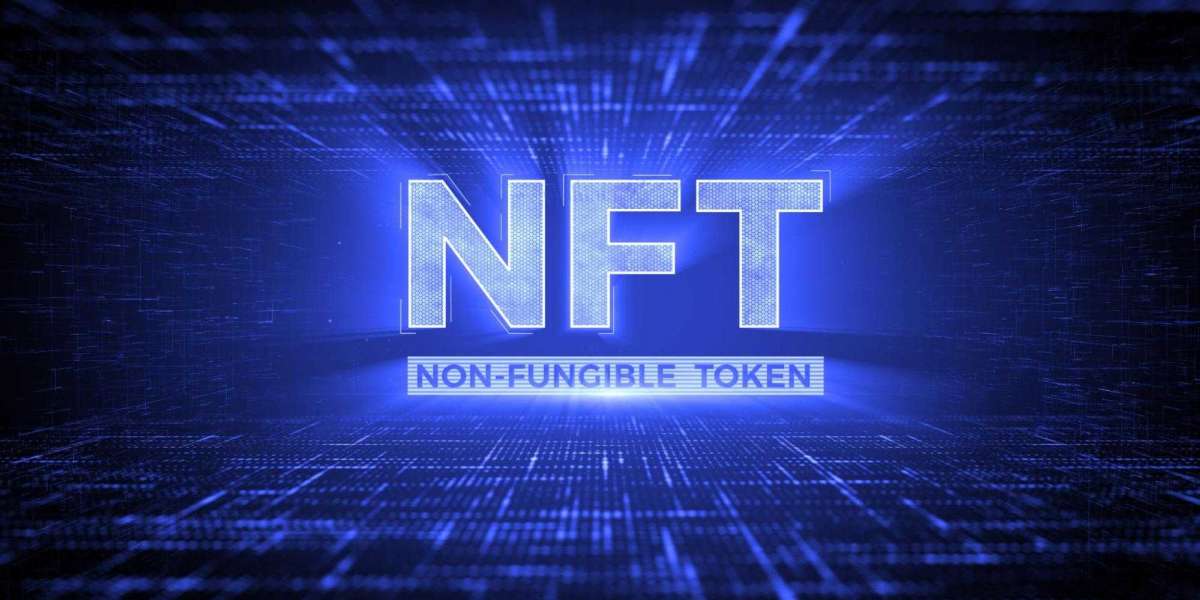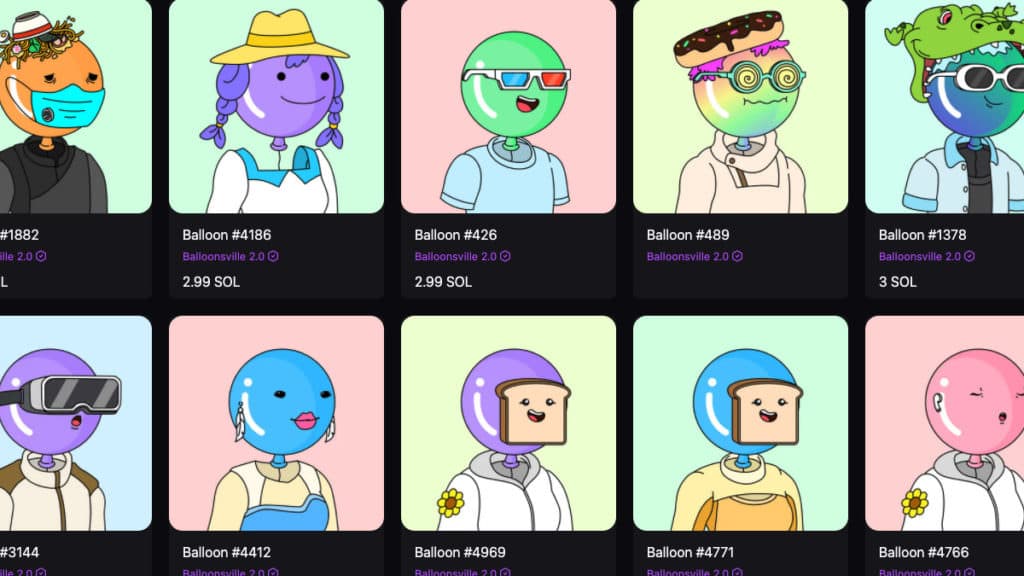Ah yes, NFTs or non-fungible tokens. Certainly, you’ve heard of it before. After all, everyone has been talking about it all over the Internet. But what exactly are NFTs?
To put it briefly, NFTs are digital assets that you can own and trade for actual money. Some people even see it as an investment, and its value would depend on its rarity and utility.
NFTs are quickly becoming a multimillion-dollar industry and the massive influx of newcomers and investors, as well as opportunists and scammers, is unsurprising.
To avoid falling victim to such devious deeds, you should always be vigilant and assume that any NFT project can be a scam.
The 6 red flags to watch out for!
If you’re thinking about investing, you should be aware of certain red flags. To protect yourself and your money from such scams, you must dig deep and investigate every detail about the developers and their projects.
1. An unknown anonymous team
You must look into their entire team and validate their credibility. An unknown team is more likely to pull off a rug pull on their community and run away with all the profit and investment.
You should also check if the developers are active on social media and see if they have a vibrant and active community that supports them.
Projects may also have phony followers. They can easily accomplish this by employing bots or hiring people to post fake reviews on fake accounts. And they don’t even have to look hard because many people would willingly help if money is involved. So be wise and take things with a grain of salt.
If a team is self-Doxxed, meaning – they have exposed their identity to the public, then that’s plus points for them for being brave, because if the project fails, people already know who they are. This is also a deterrent to rug pull scams. If you see one like this, it might be a good project to take a look into.
2. Huge ROI
Some projects would promise generous returns for investors. And many would be convinced that they can make a decent amount of money without even considering the risk. Oftentimes, the promised ROI (return of investment) would be ridiculously high, but people would still line up to invest despite the obvious red flag.
ROI graphs and statistics for their non-existent investors can also be manipulated by pumping and dumping; this scheme refers to the process of buying the NFTs themselves to drive the price and demand up. And seeing such returns makes it hard for unknowing investors to resist.
So, if it’s too good to be true, then it’s most likely a scam.
3. NFT without genuine utility
Does the NFT project have good utility? What is it for? Does it solve a problem? If an NFT serves an essential purpose for its society or even if it’s just part of a popular game, then it could be a good investment because there would always be a demand for it.
Most NFTs today are made with false scarcity with no real value but still attract the attention of investors who hope to flip it and make a profit. It may hold its value and popularity today, but it wouldn’t be a good investment in the long run.
Some NFTs that have skyrocketed are only driven by hype and FOMO (fear of missing out). But when everything stabilizes and NFTs become part of our daily lives, those NFTs that don’t have genuine utility would lose their value.
4. No apparent long-term goals
When investing in a project, you’d want it to have a clear vision and long-term goal to retain its value in the future. If the developers aren’t transparent with their plans and current progress, that’s a glowing red flag for you.
5. Abnormally high price
Some NFT projects would presale their tokens and NFTs at ridiculous prices at the start of their launch. This should be considered a bad sign, especially if the developers behind that project are unknown. They often do this to grab as much profit as they can from their community.
However, if the team behind that project is well-known or a big brand announcing their arrival on the NFT space, then having a high price for their NFT projects can be easily justified. After all, the value of their product would still depend on the demand from the market.
6. Fake NFT stores
Scammers create fake websites for popular NFT stores like OpenSea and Rarible, replicating the website interface and even the NFTs they sell.
It’s very easy to fall for such tricks, so always double-check the URL of their website because the difference there could be one single letter, and you’ll find yourself at an entirely different website designed to steal your information and money.
There are also fake NFT stores that sell NFTs that don’t even exist, and several people have fallen victim to this, thinking that they had a cheap bargain. So make sure to check the URLs and links shared online and see if it’s legit or an altered one.
Some recent NFT scams you should know
NFT scams may come from well-known individuals and enthusiasts. Thus, nothing is inevitable in the Defi space, and anyone can pull off a rug pull at any moment, so always think twice before investing.
Below are some recent examples of NFT scams that we can all learn from.
CryptoSis
Lana Rhoades 2, a p0rn actress who launched an NFT project called CryptoSis, was one example of an NFT scam. Their facade remained up for quite some time before it was revealed that they had abandoned the project and drained the funds of approximately $1.8 million.
Lana Rhoades denied that the project was a scam and even tweeted that the funds went to their developers before deleting her Twitter account.
Frosties
This rug pull by the developers of Frosties was the first recorded rug pull of this year, 2022. On January 10, the night before the rug was pulled, investors were alarmed to see that Frosties’ discord channel and Twitter account suddenly disappeared.
It turned out that the creators of Frosties had withdrawn the funds worth over $1 million, leaving only $4000 worth of ETH tokens. And the collection of 8,888 NFTs‘ prices dropped nearly zero overnight.
Some investors have shared their thoughts after the rug pull occurred. They were dumbfounded and, oddly enough, felt enlightened at the same time. They realized that they were all baited by the community’s hype without considering the risks.
One individual even advised that you should rethink your decisions before investing, even if that project you’re eyeing has over 10,000 people following and hyping about it.
Jacked Ape Club
Have you ever heard of the famous NFT collection Bored Ape Yacht Club? It’s one of the most significant NFT projects out there, and it sparked the creation of the Jacked Ape Club. It’s the same concept, except that all the apes were jacked up and buffed.
The project promised to release over 8,888 NFTs up for grabs, but after they’ve sold 3,200 NFTs, the developers got rid of the remaining supply and told everyone that they’ve all been sold out. It was then found out that almost $1.5 million total funds went to 13 different crypto wallets 1.
Balloonsville
On February 6, 2022, the developers behind Balloonsville tweeted about how easy it was to fool and make people take the bait by simply hiring paid actors for their project.
They also revealed that they were the same team that pulled a $30,000 rug from an NFT project called Doodled Dragons a month before this. And this time, they’re fleeing Balloonsville with a total of $590,000 in cash.
Surf Shark Society
Surf Shark Society is a Philippine-based NFT that got rug pulled by their blockchain developer. On March 3, 2022, at 11:00 PM, news blew up on social media that their website was suspended, their discord channel was deleted, and not a single update on their Facebook page. It was estimated that the total amount stolen was roughly $225,968.28.
Their team, later on, put out a message saying that they’ll continue the project and work on what they have left, plus some added investment. And that they’re also looking for a new developer to continue the work.
I don’t know about you guys, but I highly doubt they’ll recover from this even if they continue, especially from an NFT project that’s been rug pulled once. But who knows, they might pull it off.
Suppose you’re wondering why these people are not held responsible for the losses. Well, it’s simply because there are no strict regulations yet on the Defi (decentralized finance) space. And people on the internet can easily remain anonymous. This is why people doing such scams can get away fairly quickly. And this is one of the downsides of our current blockchain technology that needs to be addressed.
Final Thoughts
To some people, these incidents and rug pulls are a crushing blow of reality and regret, but it is a lifelong lesson to some. The NFT market is as volatile as ever, not to mention that NFT scams are rampant.
These scammers will take every chance they can to get their hands on everyone’s pocket, which is why we need to stay vigilant and spread awareness to discourage such schemes. And we can’t stress enough that extensive research and analysis are required before taking such risks.
Happy learning!





